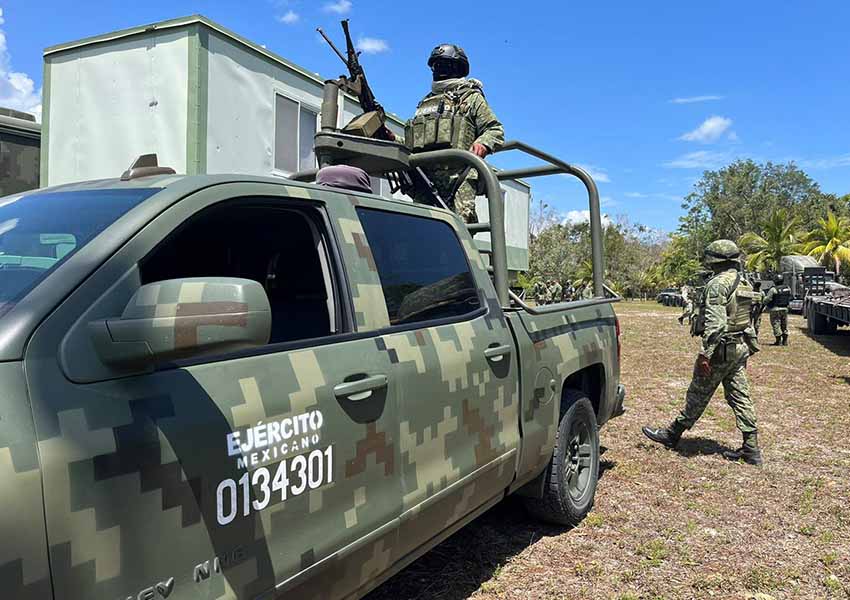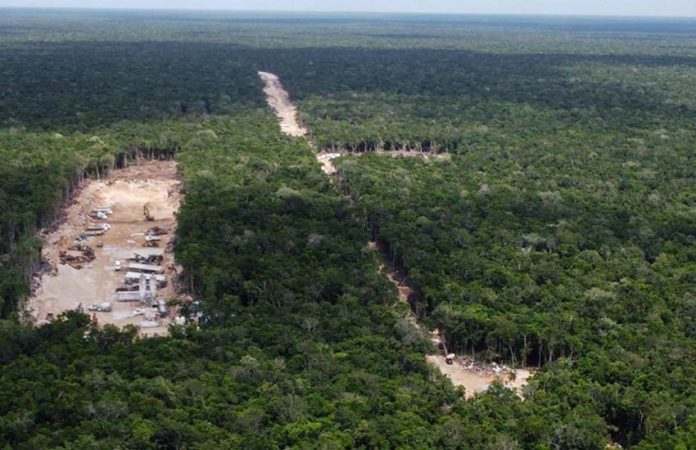Friday was the last day of a period of public input on the environmental impact for the proposed construction of Tulum Airport, but some local activists are saying that the inclusion of comments from the process is a sham, given that construction work on the site already reached the 20% mark in the month before the consultation opened on Jan. 9.
President Lopez Obrador announced the 20% figure himself in December at his daily press conference, an assertion that appears to be backed up by photos taken by the news agency Cuartoscuro in December of a long swath of cleared land on the site, and heavy machinery sitting on cleared land.
Animal Político has reported that the project as planned will result in 1.3 million trees being felled at the site to make way for the airport, as well as a military base to be located onsite.
The Defense Ministry (Sedena) is slated to build both the airport and the military base in the Quintana Roo municipality of Felipe Carrillo Puerto, not far from Tulum, on parcels of land owned by the military and the federal government.
The military air base and the airport, which President López Obrador recently announced would open in December of this year, will have the capacity to receive 4 million passengers per year. For reference, that’s a bit less than a tenth of the number of passengers that moved through the Mexico City International Airport (AICM) in 2022 and nearly eight times less than the 30 million that passed through Cancún International Airport in the same year, according to Ministry of Infrastructure, Communications and Transport figures.
Ángel Sulub Santos, an indigenous Maya and member of the U Kúuchil k Ch’i Community Center in the Felipe Carrillo Puerto, told Animal Político that the government “isn’t asking if [they] want or if [they] don’t want the airport. The public consultation does not guarantee the people’s right to prior, free and informed consent. It is not a mechanism for effective participation.”

Aáron Siller, director of the southeast regional office of the Mexican Center for Environmental Law (CEMDA) agreed. He told the news outlet that the request for public commentary amounts to nothing more than a simulacro (a sham).
“Let’s imagine that the public consultation determines that it is not the ideal place for the construction of the airport: it will not be possible to relocate it, and there has already been an environmental, social and cultural impact [in the community]. This is a simulated consultation.”
Siller also criticized the request for citizen input as a process not accessible to the local population, saying it requests commentary on a highly technical document that is difficult for the general public to understand, requires Internet access to see it, and is in Spanish despite the fact that a large part of the population in the area speaks only the Mayan language.
Work was able to begin on the project before the public input process started because of a presidential decree that has allowed the government to declare López Obrador’s flagship projects to be of public interest and national security, and thus subject to provisional approval while the project goes through the regular permitting process.
While the Supreme Court put some limits on the decree in December 2021 — such as that information on projects cannot be hidden from the public — it did give the green light to a provision that instructs government agencies to grant permits to declared “national security” projects in a maximum period of five working days.
“A project can’t be evaluated in five days,” Siller said.
The local population and the scientific community have another concern: the environmental damage that will be caused by the airport’s construction. It is being built on top of the Holbox Fracture Zone and over a karstic system with underground rivers.

“It is not just about the airport but about what is generated around it in terms of environmental, social and cultural impacts,” he said.
With reports from Animal Político.
